Essential Items For Your New Kitten
Welcoming Your Feline Friend: A Comprehensive Kitten Checklist
Bringing home a kitten is an exciting adventure, but it’s also a big responsibility. These tiny balls of fluff will soon grow into cherished companions, sharing your life for many years to come. To ensure a smooth transition for both of you, being prepared is key. This comprehensive checklist will guide you through all the essential items and considerations to create a welcoming and comfortable environment for your new furry friend.
Food and Hydration:
- Kitten Food: Fueling Growth and Development: Kittens have different nutritional needs than adult cats. Choose a high-quality kitten food specifically formulated for their rapid growth and development. Look for a brand rich in protein, essential for building strong muscles and bones. Consult your veterinarian for recommendations based on your kitten’s breed and any potential sensitivities. Starting Smoothly: If possible, find out what food the kitten was eating before coming home. Maintaining consistency during the initial settling-in period can minimize digestive upset. Gradually transition to your chosen food over a week or two, mixing increasing amounts of the new food with the familiar one.

- Food and Water Bowls: Comfort and Hygiene: Select shallow, non-tipping bowls made from ceramic or stainless steel. These materials are easy to clean and less likely to irritate your kitten’s sensitive whiskers. Opt for bowls with a wide base to prevent tipping over during playful food-time antics. Double Trouble: Provide two sets of bowls, spaced apart, for food and water. This separation mimics their natural feeding behavior and promotes good hydration. Fresh and Clean: Develop a routine of washing the food and water bowls daily with warm, soapy water. Rinse thoroughly and allow them to air dry completely before refilling.
Rest and Relaxation:
Cozy Bed: A Haven for Sleep and Security: A soft and comfortable bed is essential for your kitten’s well-being. Choose a bed that’s the right size, allowing them to curl up comfortably. Consider a cave-like bed or one with raised sides to provide a sense of security, especially during the initial adjustment period. Location, Location, Location: Place the bed in a quiet corner away from high-traffic areas of the house. This provides a peaceful retreat for napping and relaxation. Multiple Options: Kittens are curious and love to explore. Scatter a few additional comfy spots around the house, like fleece blankets or cardboard boxes lined with soft towels.
Scratching Post: Saving Your Furniture: Cats have a natural instinct to scratch, and providing them with a designated scratching post will help protect your furniture and carpets. Choose a sturdy scratching post that’s tall enough for your kitten to stretch fully when scratching vertically. Consider scratching posts made from different materials like sisal, cardboard, or carpet to cater to your kitten’s preferences. Location is Key: Place the scratching post in a prominent location where your kitten spends a lot of time, like near a window or by their bed. You can also sprinkle some catnip on the scratching post to make it more enticing.
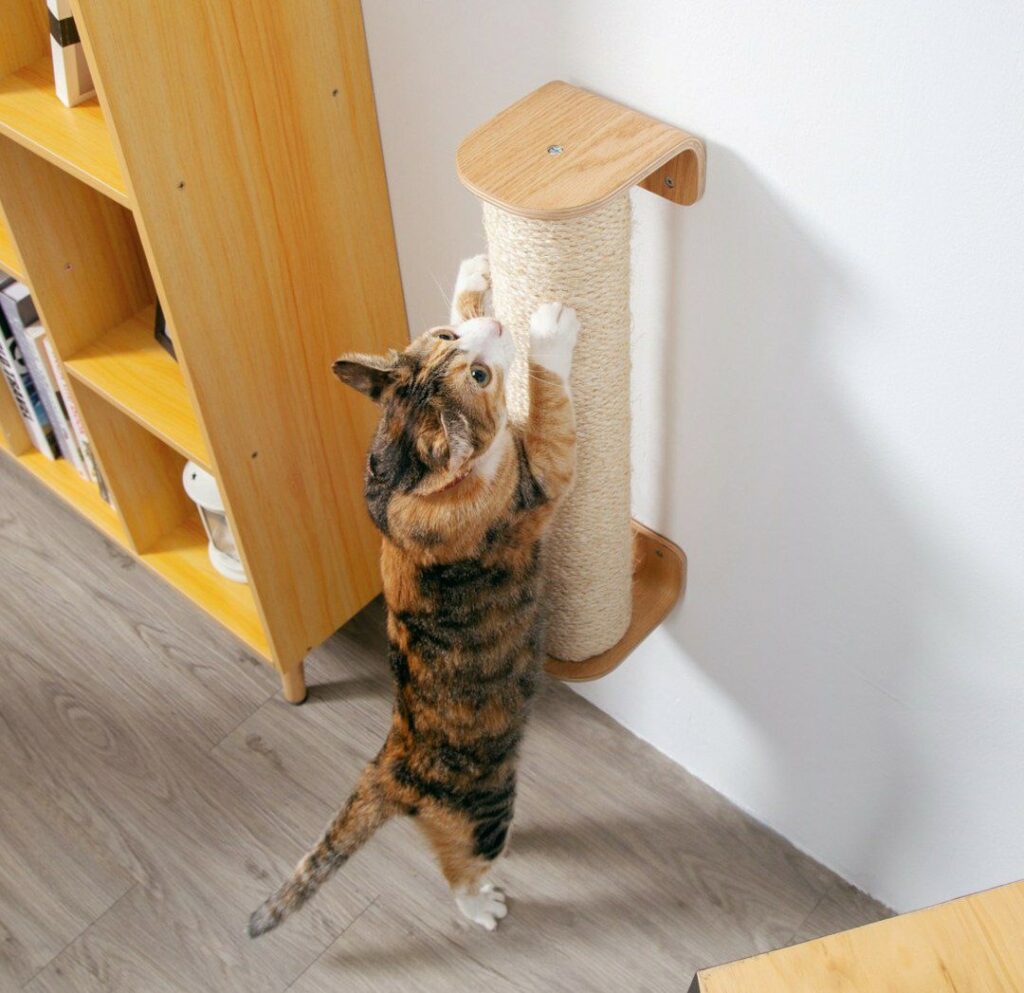
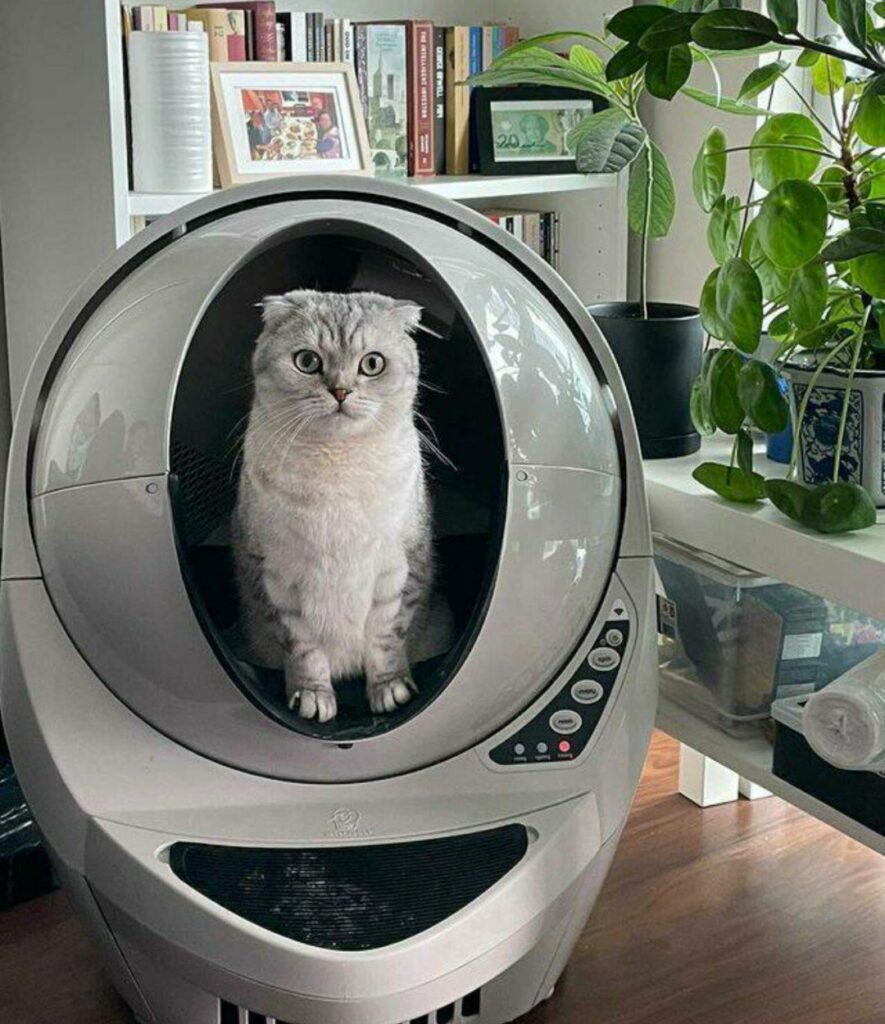
Litter Box Essentials:
- Litter Box: A Designated “Bathroom”: Provide a spacious litter box that allows your kitten to turn around comfortably and eliminate in a relaxed posture. Bigger is usually better, especially for larger breeds or as your kitten grows. Multiple Boxes (Optional): Consider having multiple litter boxes, especially in larger homes or multi-cat households. A good rule of thumb is to have one litter box per cat, plus one extra. This provides options and reduces competition.
- Clumping Litter: Odor Control and Easy Cleaning: Clumping litter makes scooping waste easier and helps with odor control. Choose a unscented or mildly scented litter that is gentle on your kitten’s paws. Avoid litters with strong fragrances, which can be irritating to some cats.
- Scoop: Maintaining Hygiene: Invest in a sturdy and comfortable litter scoop to remove waste daily. This helps maintain good hygiene and prevents unpleasant odors from filling your home.
Playtime and Enrichment:
Toys: Keeping Boredom at Bay: Kittens are naturally playful creatures with boundless energy. Provide a variety of toys to keep them entertained and stimulated. Catnip-filled toys, feather wands with dangling feathers, and crinkly balls are popular choices. Rotate the toys regularly to maintain interest and prevent boredom. Interactive Play: Schedule playtime sessions with your kitten daily. This not only burns off their energy but also strengthens your bond through positive interaction. Use interactive toys that encourage chasing, swatting, and pouncing to mimic their natural hunting instincts.
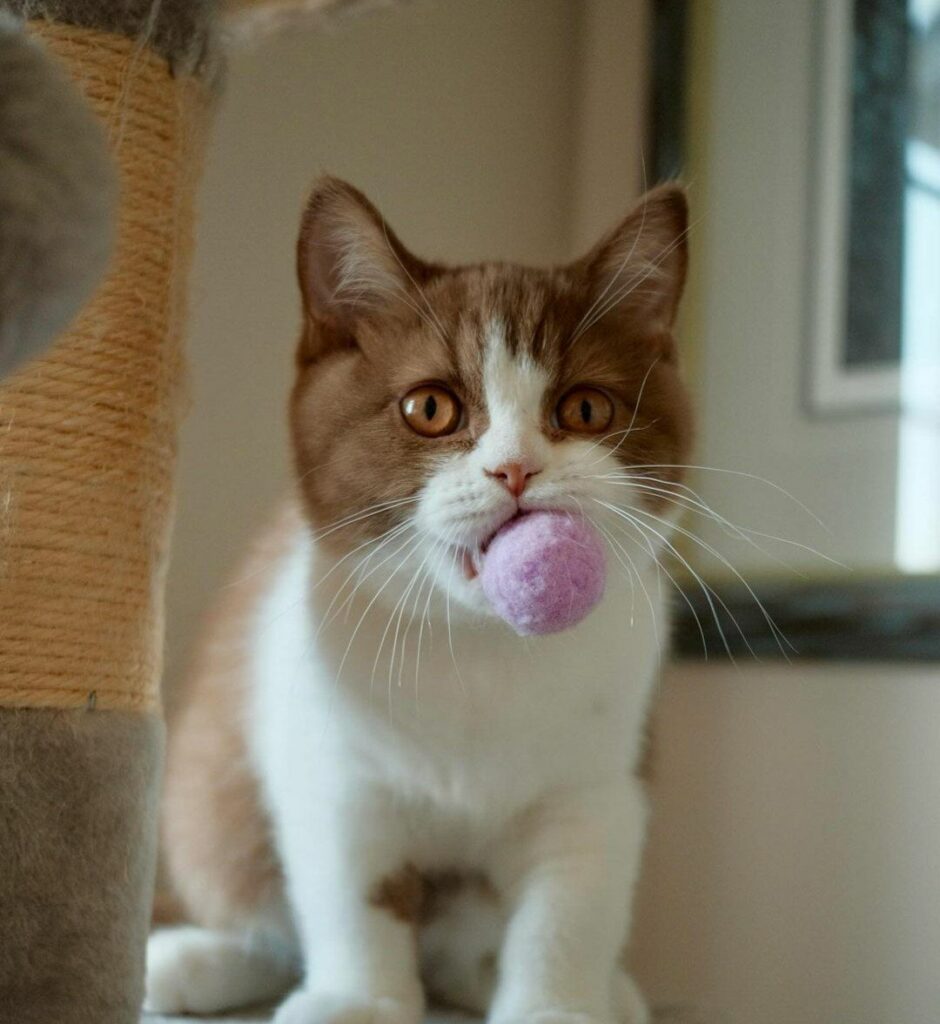
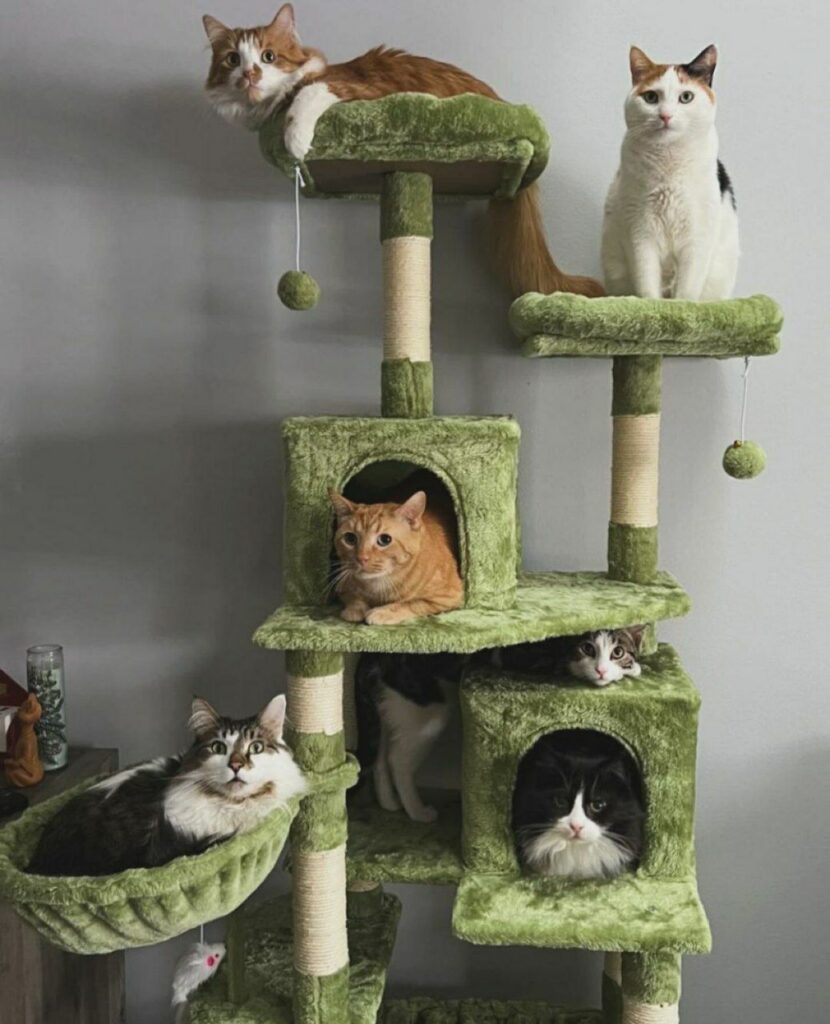
Climbing Structures: Vertical Exploration: Cats love to climb and perch in high places. Consider providing vertical space for your kitten with a cat tree or shelves mounted on the wall. A cat tree offers a variety of platforms, ramps, and cubbyholes for them to explore, climb, nap, and observe their surroundings. Wall shelves strategically placed around the house create a designated climbing pathway and keep them off your furniture. Safety First: Ensure the cat tree is stable and secure, with sturdy sisal-wrapped scratching posts incorporated into the design. Choose shelves that are wide enough for your kitten to comfortably walk and rest on.
Additional Needs:
- Carrier: Essential for Travel and Vet Visits: A secure and comfortable carrier is essential for transporting your kitten to the veterinarian, on trips, or in case of emergencies. Choose a carrier that’s large enough for your kitten to stand up and turn around comfortably, but not so big that they feel anxious. Positive Association: Make the carrier a familiar and positive space by leaving it out with the door open and placing soft bedding or a favorite toy inside.
- Collar and ID Tag (Optional): A collar with an ID tag engraved with your contact information ensures your kitten’s safe return if they ever get lost. However, wait until your kitten is a bit older (around 4-6 months) and their neck size is more established before putting on a collar. Ensure the collar is a breakaway design to prevent strangulation if it gets snagged.
- Brush or Comb: Maintaining a Healthy Coat: Regular brushing helps prevent hairballs and keeps your kitten’s fur healthy and shiny. Start introducing grooming sessions early on, using a soft brush or comb specifically designed for kittens. Gentle brushing removes loose fur, promotes blood circulation, and strengthens your bond with your furry friend.
Kitten-Proofing Your Home:
- Electrical Cords: Safety First: Kittens are curious and love to explore with their mouths. Hide electrical cords behind furniture or use cord protectors to prevent chewing which could lead to serious injury. Secure any loose wires or outlets with electrical tape to further minimize risks.
- Poisonous Plants: Be Aware of Toxins: Many common houseplants are toxic to cats. Research and remove any plants that could be harmful if ingested by your kitten. Popular toxic plants include lilies, dieffenbachia, and philodendron.
- Small Objects: Choking Hazards: Pick up small objects like coins, rubber bands, sewing needles, or hair ties that could be choking hazards for your kitten. Keep them out of reach or stored away in cabinets or drawers.
- Chemical Products: Keep Out of Reach: Store cleaning products, medications, and other potentially harmful chemicals securely out of your kitten’s reach. Use childproof cabinet locks if necessary.
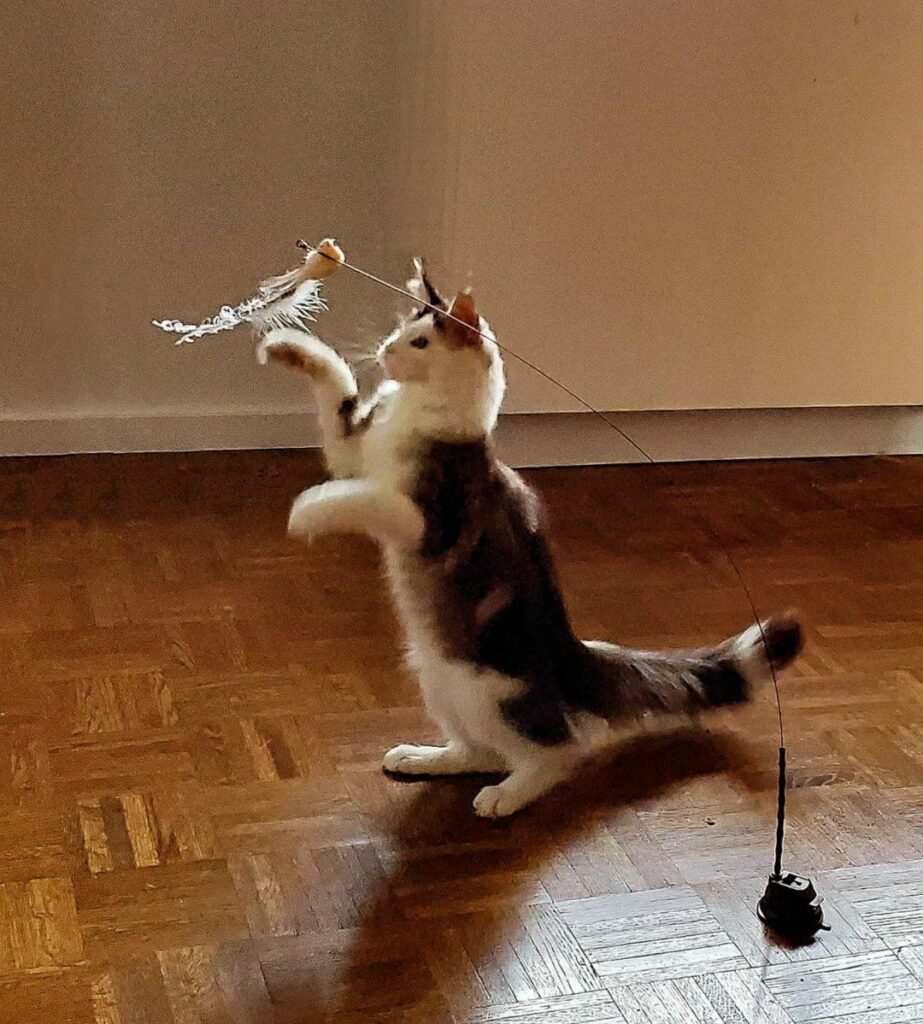
Welcoming Your New Arrival:
- The Big Day: On the day you bring your kitten home, prepare a quiet and comfortable space for them to explore. Set up the litter box, food and water bowls, bed, and a few toys. Let your kitten adjust to their new surroundings at their own pace. Avoid overwhelming them with too much attention or introducing them to too many people or new pets right away.
- Patience and Consistency: Bringing home a kitten is a big adjustment for both of you. Be patient and understanding as your kitten learns the ropes. Develop a consistent routine for feeding, playtime, and litter box use. Positive reinforcement with treats, praise, and gentle petting is key to building trust and a strong bond.
- Veterinary Care: Schedule a veterinary checkup within a week of bringing your kitten home. This allows the vet to assess their overall health, administer any necessary vaccinations, and answer any questions you might have.
Additional Tips:
- Pet Insurance: Consider pet insurance to help cover unexpected veterinary costs. There are various pet insurance plans available, so do your research and choose one that best suits your needs and budget.
- Scratching Deterrents: If your kitten shows a persistent interest in scratching furniture, consider using scratching deterrents like double-sided sticky tape or furniture covers in those specific areas. The unpleasant sensation will discourage them from scratching and redirect them to the designated scratching post.
- Destructive Behavior: Chewing, scratching furniture, or climbing curtains are all normal behaviors for kittens exploring their environment. Redirect these behaviors by providing appropriate outlets like scratching posts and engaging toys. Positive reinforcement with praise and treats is more effective than punishment.
- Enjoy the Journey: Raising a kitten is a rewarding experience filled with moments of joy, laughter, and unconditional love. Embrace the journey, be patient, and create lasting memories with your furry companion.
By following this comprehensive checklist and creating a welcoming and safe environment, you’re

